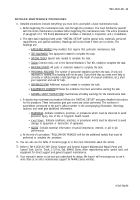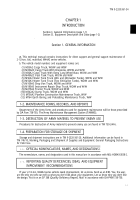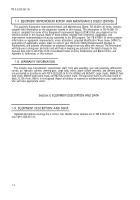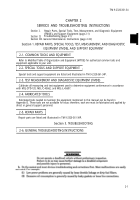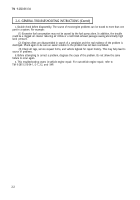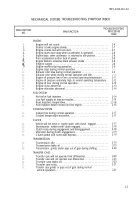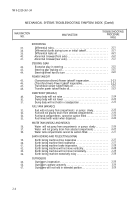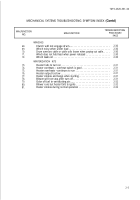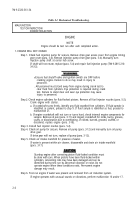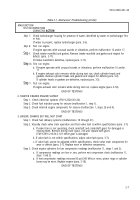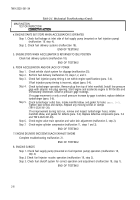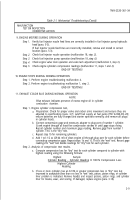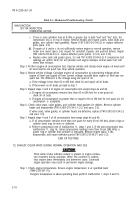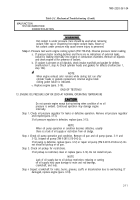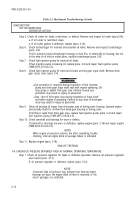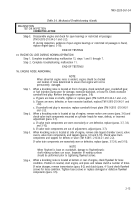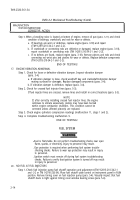TM-9-2320-361-34 - Page 22 of 764
TM 9-2320-361-34
Table 2-1. Mechanical Troubleshooting (Contd).
MALFUNCTION
TEST OR INSPECTION
CORRECTIVE
ACTION
Step 7.
Step 8.
Step
9.
Step
10.
Step
11.
Check turbocharger housing for presence of water, identified by water on turbocharger fins
or hub.
If water is present, replace turbocharger (para. 5-6).
Test run engine.
If engine operates with unusual sounds or vibrations, perform malfunction 16 and/or 17.
Check intake manifold and gasket. Remove intake manifold and gasket and inspect for
defects (para. 3-17).
If intake manifold is defective, replace (para. 3-17).
Test run engine.
a. If engine operates with unusual sounds or vibrations, perform malfunction 16 and/or
17.
b. If engine exhaust color remains white during test run, check cylinder heads and
gaskets. Remove cylinder heads and gaskets and inspect for defects (para. 3-3).
If cylinder heads or gaskets are defective, replace (para. 3-3).
Test run engine.
If engine exhaust color remains white during test run, replace engine (para. 3-18).
END OF TESTING!
2.
STARTER CRANKS ENGINE SLOWLY
Step 1. Check electrical systems (TM 9-2320-361-20).
Step 2. Check fuel injection pump for seizure (malfunction 1, step 1).
Step 3. Check internal engine components for seizure (malfunction 1, steps 2b and 4).
END OF TESTING!
3. ENGINE CRANKS BUT WILL NOT START
Step 1. Check fuel delivery systems (malfunctions 18 through 21).
Step 2. Visually check valve train operation and that valve lash is within specifications (para. 3-7).
a. If valve train is not operating, check camshaft and crankshaft gears for damaged or
missing teeth. Remove timing cover (para. 3-8) and replace both gears
(TM 9-2815-210-34-2-1) if either gear is damaged.
b. If valve lash is not within specifications, adjust valve lash (para. 3-7).
c. If valve lash cannot be adjusted within specifications, check valve train components for
wear or defects (para. 3-7). Replace worn or defective components.
Step 3. Check engine cylinders for low compression readings (malfunction 11, steps 1 and 2).
a.
b.
If compression readings are low or zero, perform wet compression check (malfunction 11,
steps 1 and 2).
If wet compression readings increase 50 psi (345 kPa) or more, piston rings or cylinder
bores may be worn. Replace engine (para. 3-18).
END OF TESTING!
2-7
Back to Top

